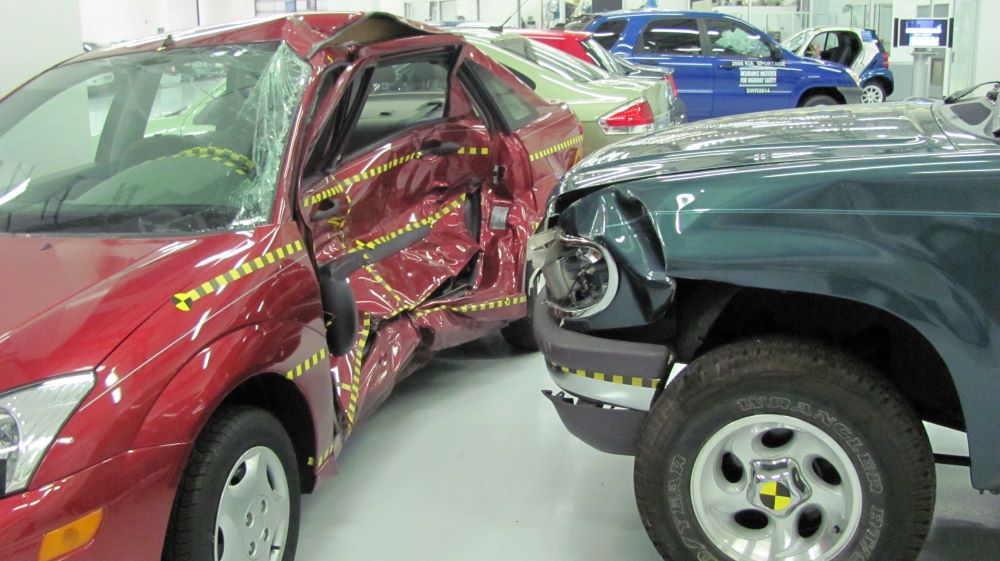Travel
Understanding the Common Abbreviations in Motor Vehicle Accidents
According to the NHTSA’s preliminary data, an estimated 18,720 people died in traffic crashes between January 2024 and June 2024. This is a 3.2% decrease from 2023 during the same time period when 19,330 people died in traffic accidents.
You may have encountered some abbreviations while reading reports or filling out insurance forms after being involved in a car accident. Some of these abbreviations include Motor Vehicle Accident (MVA) and Personal Injury Protection (PIP). DAS Law Group, P.A.- DeVore, Acton & Stafford says that understanding these terms will help you get the necessary coverage for your case.

In this article, you will learn the commonly used abbreviations when dealing with motor vehicle accidents and how these abbreviations influence the outcome of your claims and the protection of your legal rights.
Common Abbreviations Explained
Understanding auto accident report definitions aids insurance claims and judicial proceedings. Abbreviations are more crucial since they condense important information into a digestible form. Understanding popular abbreviations will help you write an accident report. Abbreviations are used to condense important information and make reports easier to read. In the case of
For example, the term front-wheel drive is often abbreviated as “FWD.” The abbreviation immediately makes you think of the vehicle type and may highlight MVA. Other abbreviations are BWC and P.O.V., which stand for Bureau of Workers’ Compensation and Privately Owned Vehicle, respectively. These terms represent a certain meaning that is easily understood by individuals working in related industries.
Driving Under the Influence, or DUI, is another common abbreviation that denotes a probable cause of vehicle accidents.
Abbreviations in Police Reports
There are many abbreviations for motor vehicle accidents when it comes to police reports, which can be overwhelming. For instance, MVC means vehicle motor collision and PI means personal injury. Seeing these terms in a police report can easily confuse someone who is not familiar with vehicular accidents. These can result in inaccurate comprehension of important details.
Another example can be the reports from the Department of Transport and Florida Highway Patrol. These agencies usually include TBD: To Be Determined or N/A: Not Applicable. Each shorthand conveys important information to the readers of the report.
BOLO stands for “Be on the Lookout,” and it is used when police are looking for suspects in cases. You might come across the words SUS for suspect and WIT for witness, which are very critical to knowing the dynamics of the incident.
Insurance-Related Abbreviations
Understanding frequently used abbreviations in insurance claims will save time and prevent confusion. Personal Injury Protection, or “PIP,” is a common insurance term that refers to a type of coverage that pays medical expenses, regardless of fault.
Bodily Injury Liability (BIL) is another important insurance abbreviation. It is an insurance coverage that pays for someone else’s personal injury and hospital costs if you are at fault.
UM stands for uninsured motorist and refers to drivers who do not have insurance. Meanwhile, UIM stands for underinsured motorist and refers to drivers whose insurance coverage is not enough to cover the necessary expenses.
CDW, or collision damage waiver, is a common term in the rental car industry that refers to an additional type of insurance that covers damages to the rental vehicle. ACV stands for “Actual Cash Value” and describes how the worth of your car is calculated after considering the depreciation.
Legal Terminology in Accidents
The legal environment is considered very complicated, with many jargons and abbreviations that can perplex an inexperienced individual. Understanding these terms is important to better understand the implications of a vehicular accident case.
One common term in accident cases is negligence, or failing to meet the ordinary or reasonable standard of care for an event’s impact. Proof of negligence is important for finding liability.
Another example is the plaintiff, who brings the lawsuit, and the defendant, who is accused or sued. Tort can sometimes be mentioned. It is an adverse act that makes you liable for virtually anything, from personal injury to property damage.
A person must know that in legal settings, “damages” refers to cash compensation for accident-related losses. Likewise, the meaning of “settlement” is different in the context of the court.
“Liability insurance” is a type of insurance product that protects policyholders who are found to be liable for bodily injury or property damage claims.
Navigating Medical Terms
Knowing medical terms commonly associated with car accidents is important in a patient’s recovery. Some medical terms can cause anxiety and stress to someone who is unfamiliar with medical terms.
A computed tomography (CT) scan is commonly used in conjunction with an MRI to detect internal bleeding or injuries. Other medical terms that people involved in accidents can encounter are fractures and contusions. Frature indicates broken bones. Contusions refer to a bruise caused by a blow.
Doctors will use ‘OR’ to mean ‘operation room and ‘ICU’ to mean ‘intensive care unit’. These terms are frequently used to describe severe medical conditions that require more stringent medical attention.
These medical terms and abbreviations can easily illustrate the scope of the problem.
